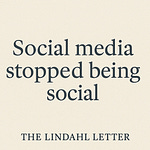The topic for this week was a weighty one for sure. It’s one that I think will functionally happen, but I do not believe will be real in terms of actual practice. We are seeing a lot of emphasis on using these new AI systems that are popping up everywhere. People are not able to build these systems from scratch anymore. Using code from somebody else is becoming more and more a part of the process. When you look at how to democratize AI systems it is certainly about spreading usage and making these systems omnipresent. Security is structurally something that is important in this situation, but it remains something that generally happened before you got involved. In that scenario, really deeply considering how your AI system security posture is going to be invoked you have to consider both forward looking actions and the backward linkages within these products both in terms of the build and design.
Within the calling of an API in this space it certainly is possible to consider what data is going out and what is coming back. You can pretty clearly understand what happens with the data after it is sent over and what is going to happen with it after the fact. My searches on Google Scholar for articles related to AI security were not super exciting [1]. That search with the brackets around the search term yielded about 2,900 items. Taking the brackets off opened up the results to over 3 million [2]. This may very well be a space where the academic content has not caught up with where the technology happens to be at the moment. A lot of academic research in the space is occurring, but since the papers are not really about or from production implementations the topics of how to secure, manage, and deploy are distinctly lacking.
At this point in the story, I got super interested in reading about comparisons of protocols for distributed social networking. Things like the AT protocol vs activitypub [3]. Oddly, one of the best lists that I encountered was on Wikipedia where somebody is clearly keeping track of open projects related to this one [4]. You might be wondering if that list includes 30+ projects with tacking and information and you will find out that it totally does. However, being able to take a look at such a large list actually made me a little bit concerned about any of these protocols actually becoming dominant and taking over in practice.
Let’s take this post in a different, more meta direction. Ok, here are all the spilled beans on that one, I ended up making an executive decision on how to manage my writing backlog. It was a super disruptive and spur of the moment decision at this point in the process. I went ahead and at the week 128 issue (which is this post) pasted into the backlog the new list of 49 items from a Google Keep note. That happened as a result of a really productive day that happened last week. During one of the vacation days at the beach recently, I started making a list of topics I would like to spend some time either researching or writing about.
It turns out that list ended up including 49 total items. With the addition of those 49 items, my backlog is now tracking out to week 218. Switching things up like that means I’m going to struggle with updating the next five weeks of forward looking items on a bunch of blocks of content, but that is a solvable problem in terms of editing and writing. It’s just a bit annoying and somewhat time consuming vs. creating any really ongoing problematic situation. That does mean that starting in July you will start to get the benefit of this new backlog and strictly speaking you are going to end up waiting about a year to return to the previously structured program content.
While we are zoomed out and considering some of the more meta implications of things I’ll note that I have kept the podcast part of this effort going. Readership numbers indicate that it is a smaller portion of things compared to the standard text based link clicking. About 20% of the ongoing traffic for this writing project seems to be related to the audio based podcast. The recording process is now pretty streamlined and I have it as a part of my overall creative weekend routine. These weekly blocks of writing won’t grow long enough to make recording the audio for them problematic in terms of a time commitment.
Footnotes:
[1] https://scholar.google.com/scholar?hl=en&as_sdt=0%2C6&q=%22ai+security%22&btnG=
[2] https://scholar.google.com/scholar?hl=en&as_sdt=0%2C6&q=ai+security&btnG=
[3] https://www.theverge.com/2023/4/20/23689570/activitypub-protocol-standard-social-network
[4] https://en.wikipedia.org/wiki/Comparison_of_software_and_protocols_for_distributed_social_networking
What’s next for The Lindahl Letter?
Week 129: How do you use Colab in a generative way?
Week 130: Build captain fractal using Colab
Week 131: Bulk imagine improvement scripting
Week 132: Synthetic data notebooks
Week 133: Automated survey methods
If you enjoyed this content, then please take a moment and share it with a friend. If you are new to The Lindahl Letter, then please consider subscribing. New editions arrive every Friday. Thank you and enjoy the week ahead.











